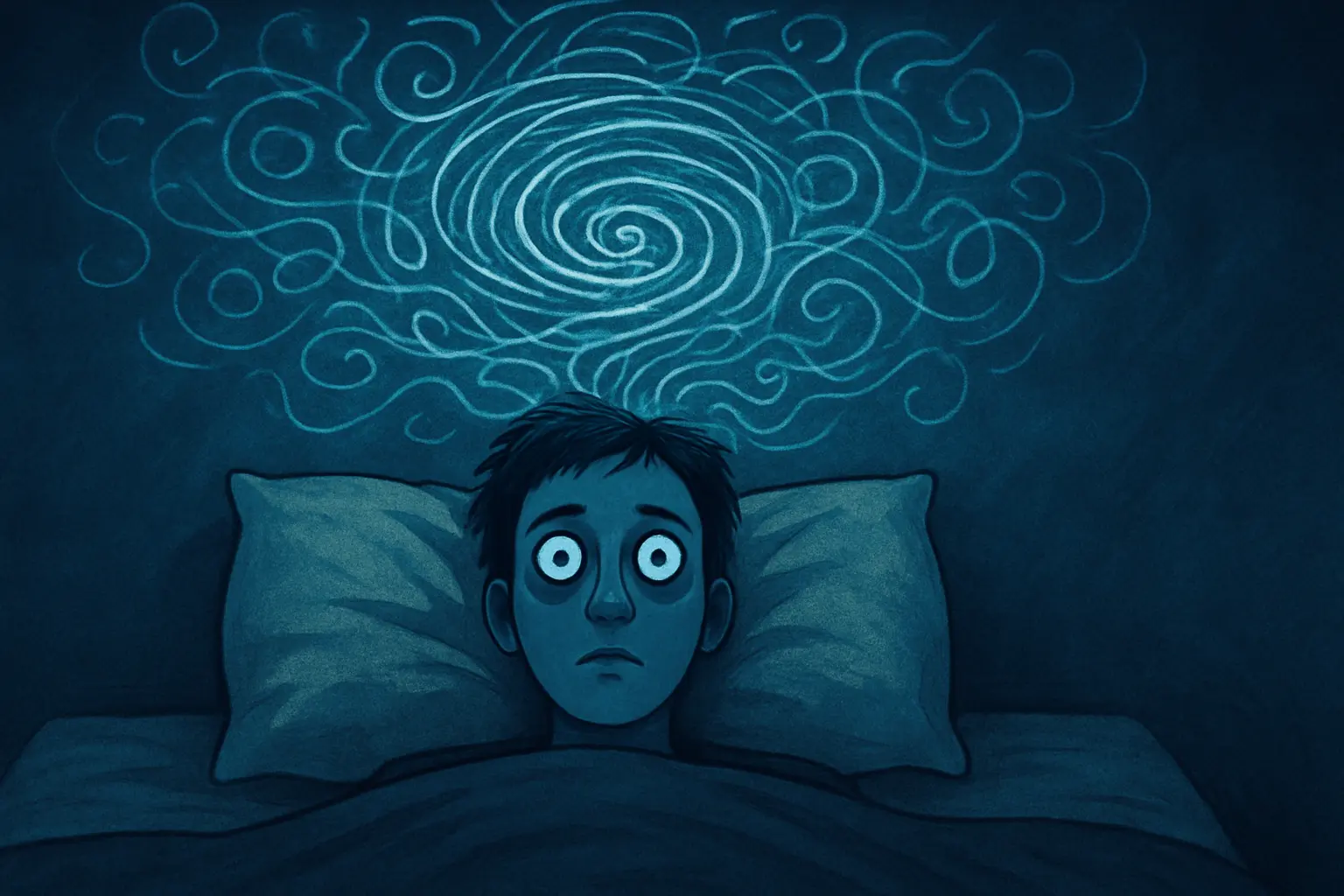Complete Insomnia Guide: Understanding, Prevention, and Treatment
Published by Dr. Emily Rodriguez | Sleep Medicine Specialist
Key Points:
- 30% of adults experience insomnia symptoms annually, with 10% suffering from chronic insomnia
- Cognitive Behavioral Therapy for Insomnia (CBT-I) is the gold standard treatment with 70-80% success rate
- Snail Sleep APP can help track sleep patterns and identify insomnia triggers
- Sleep hygiene improvements can resolve 50% of mild insomnia cases
- Early intervention prevents acute insomnia from becoming chronic
Summary: Insomnia affects millions of people worldwide, significantly impacting quality of life and overall health. Understanding the different types, causes, and evidence-based treatments is crucial for effective management. Modern sleep tracking tools like Snail Sleep APP can help identify patterns, monitor treatment progress, and provide personalized insights for better sleep.
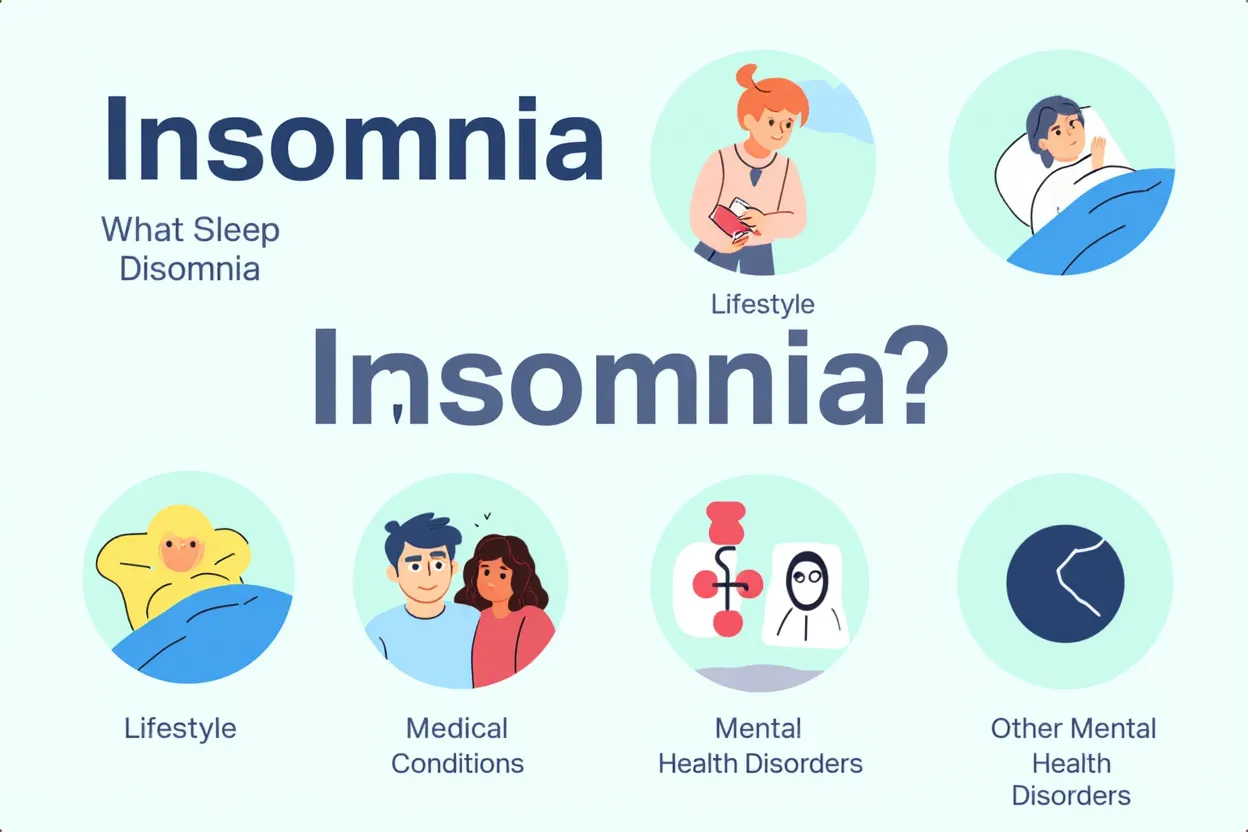 Insomnia causes and solutions infographic
Insomnia causes and solutions infographic
Insomnia, the persistent difficulty with sleep initiation, duration, consolidation, or quality, despite adequate opportunity and circumstances for sleep, is a pervasive global health concern. It affects millions worldwide, impacting not just physical health but also mental well-being, productivity, and overall quality of life. This comprehensive guide delves into the multifaceted nature of insomnia, exploring its various forms, underlying causes, and a spectrum of evidence-based strategies for effective management and lasting relief.
What is Insomnia?
Insomnia is more than just a few restless nights. It's a clinical sleep disorder characterized by dissatisfaction with sleep quantity or quality, associated with one or more of the following symptoms:
- Difficulty falling asleep (sleep onset insomnia)
- Difficulty staying asleep (sleep maintenance insomnia), including frequent awakenings or problems returning to sleep after awakenings
- Waking up too early in the morning (early morning awakening insomnia)
- Experiencing non-restorative or poor quality sleep
These sleep disturbances typically occur at least three nights per week and have been present for at least three months for a diagnosis of chronic insomnia. Acute insomnia, on the other hand, is short-term, lasting from a few days to a few weeks, often triggered by stress or life changes.
The Prevalence and Impact of Insomnia
Insomnia is remarkably common. Studies suggest that approximately 10-30% of the general population suffers from chronic insomnia, with prevalence rates potentially higher in specific demographics, such as older adults, women, and individuals with co-existing medical or psychiatric conditions. The impact extends far beyond the bedroom:
- Physical Health: Chronic insomnia is linked to an increased risk of hypertension, heart disease, diabetes, obesity, and a weakened immune system.
- Mental Health: It significantly contributes to the development or exacerbation of mood disorders like depression and anxiety, and can impair cognitive functions such as memory, concentration, and decision-making.
- Daily Functioning: Daytime fatigue, irritability, reduced productivity, and an increased risk of accidents are common consequences.
 Impact of insomnia on daily life
Impact of insomnia on daily life
Causes of Insomnia: A Complex Web
Insomnia is rarely caused by a single factor. Instead, it often arises from a complex interplay of predisposing, precipitating, and perpetuating factors.
Predisposing Factors
These are individual characteristics that make a person more vulnerable to insomnia:
- Biological Factors: Genetic predispositions, hyperarousal traits (a tendency to be more physiologically and psychologically reactive to stress), and certain neurochemical imbalances.
- Psychological Factors: A history of anxiety, depression, or other mental health disorders.
- Personality Traits: Perfectionism, excessive worrying, and a tendency to internalize stress.
Precipitating Factors
These are immediate triggers that initiate an episode of insomnia:
- Stressful Life Events: Job loss, relationship problems, bereavement, financial difficulties, or major life transitions.
- Medical Conditions: Chronic pain, asthma, allergies, gastroesophageal reflux disease (GERD), thyroid disorders, neurological conditions (e.g., Parkinson's disease), and sleep disorders like restless legs syndrome or sleep apnea.
- Psychiatric Disorders: Depression, anxiety disorders, bipolar disorder, and post-traumatic stress disorder (PTSD) are strongly associated with insomnia.
- Medications: Certain drugs, including some antidepressants, cold and flu medications, corticosteroids, and blood pressure medications, can interfere with sleep.
- Substance Use: Caffeine, nicotine, alcohol, and illicit drugs can disrupt sleep architecture.
- Environmental Changes: Jet lag, shift work, noisy environments, uncomfortable bedding, or extreme temperatures.
Perpetuating Factors
These are behaviors and thoughts that maintain insomnia once it has started, even after the initial trigger has passed:
- Poor Sleep Hygiene: Irregular sleep schedules, excessive napping, consuming caffeine or alcohol close to bedtime, using electronic devices in bed, and lack of a relaxing bedtime routine.
- Maladaptive Behaviors: Spending too much time in bed trying to sleep, napping excessively during the day to compensate for lost night sleep, and increasing time in bed to compensate for perceived sleep debt.
- Cognitive Factors: Catastrophizing about sleep loss, excessive worry about not sleeping, unrealistic expectations about sleep, and misattributions of daytime symptoms to insomnia rather than other causes.
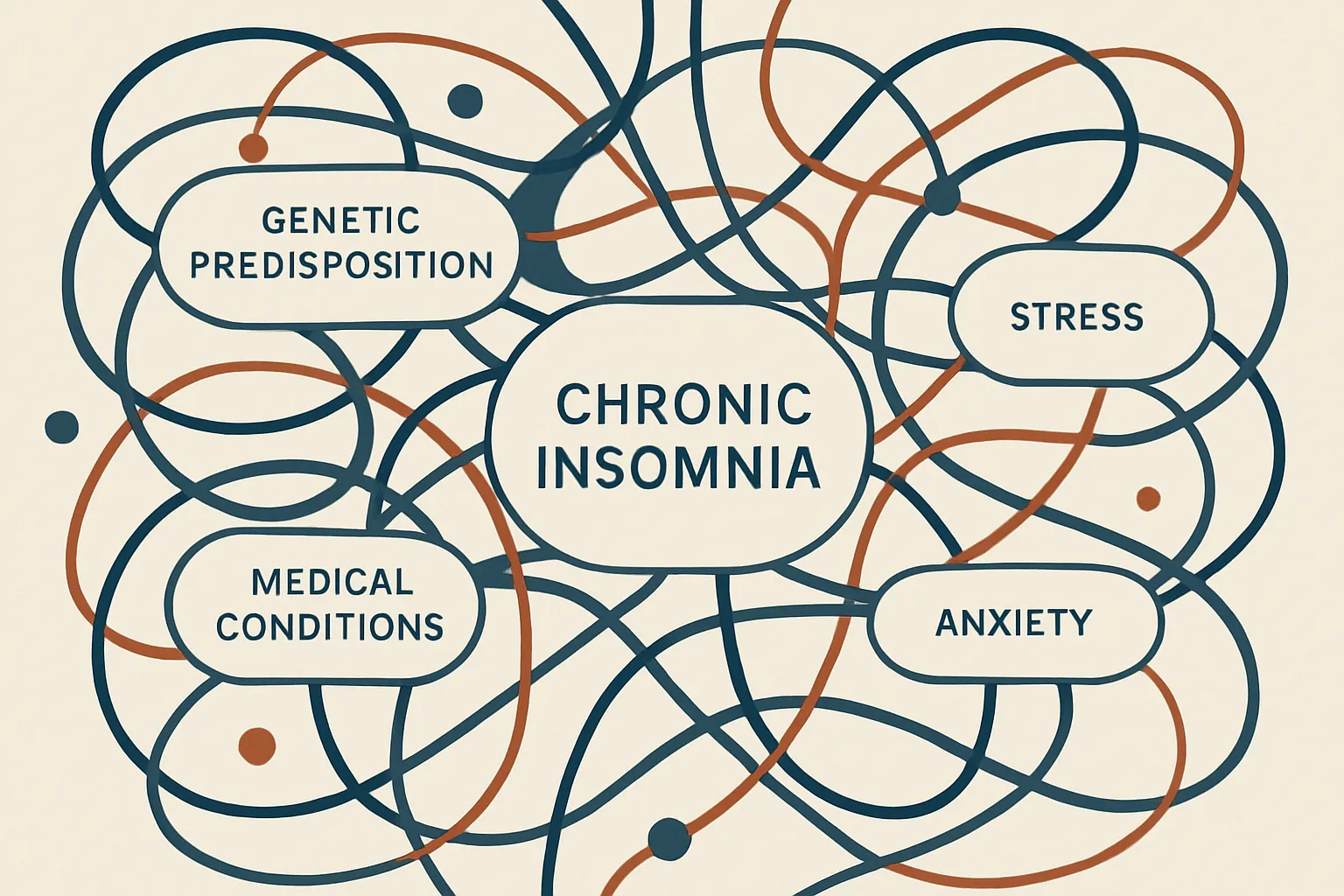 Complex causes of chronic insomnia
Complex causes of chronic insomnia
Diagnosing Insomnia
Diagnosis typically involves a thorough medical history, a physical examination, and a detailed sleep history. A sleep diary, where the individual records their sleep patterns for one to two weeks, is often a crucial tool. In some cases, a polysomnography (sleep study) may be recommended to rule out other sleep disorders like sleep apnea or restless legs syndrome.
Effective Solutions for Insomnia: A Multi-pronged Approach
Treating insomnia effectively often requires a combination of strategies, addressing both the underlying causes and the perpetuating factors.
1. Cognitive Behavioral Therapy for Insomnia (CBT-I)
CBT-I is considered the gold standard non-pharmacological treatment for chronic insomnia. It is a structured program that helps identify and replace thoughts and behaviors that cause or worsen sleep problems with habits that promote sound sleep. Key components of CBT-I include:
- Cognitive Restructuring: Challenging and changing negative thoughts and beliefs about sleep (e.g., "I'll never be able to sleep," "I can't function without 8 hours of sleep").
- Stimulus Control Therapy: Re-associating the bed and bedroom with sleep by limiting activities in bed to sleep and intimacy, and getting out of bed if unable to sleep after a certain period.
- Sleep Restriction Therapy: Temporarily reducing the time spent in bed to match the actual amount of sleep obtained, thereby increasing sleep drive and efficiency. As sleep improves, time in bed is gradually increased.
- Relaxation Training: Techniques such as progressive muscle relaxation, diaphragmatic breathing, and meditation to reduce arousal and promote sleep.
- Sleep Hygiene Education: Providing information about healthy sleep habits (discussed below).
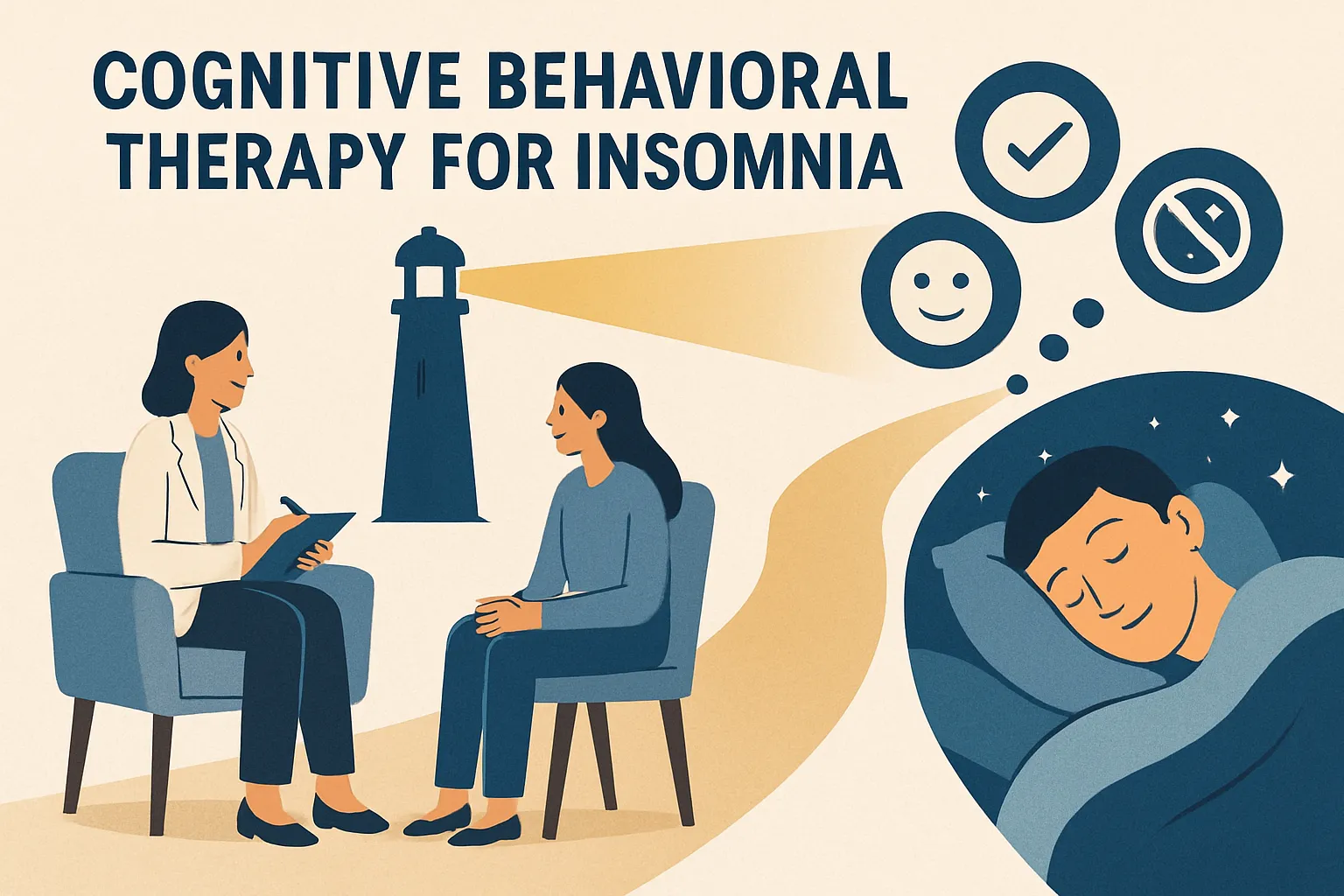 CBT-I as gold standard therapy
CBT-I as gold standard therapy
2. Pharmacological Treatments
Medications can be used for short-term relief of insomnia, especially acute insomnia, or as an adjunct to CBT-I for chronic cases. However, they are generally not recommended for long-term use due to potential side effects, tolerance, and dependence. Common classes of sleep medications include:
- Benzodiazepine Receptor Agonists (BZRAs): Such as zolpidem (Ambien), eszopiclone (Lunesta), and zaleplon (Sonata). These are effective for sleep onset and maintenance but carry risks of dependence and side effects like dizziness and memory problems.
- Melatonin Receptor Agonists: Ramelteon (Rozerem) targets melatonin receptors and is primarily used for sleep onset insomnia, with fewer side effects and no risk of dependence.
- Antidepressants with Sedative Properties: Trazodone, doxepin, and mirtazapine are sometimes prescribed off-label for insomnia, particularly when co-occurring with depression or anxiety.
- Orexin Receptor Antagonists: Suvorexant (Belsomra) and lemborexant (Dayvigo) block the wake-promoting effects of orexin, promoting sleep. They are newer options with different side effect profiles.
It is crucial to use sleep medications under medical supervision due to potential risks and interactions.
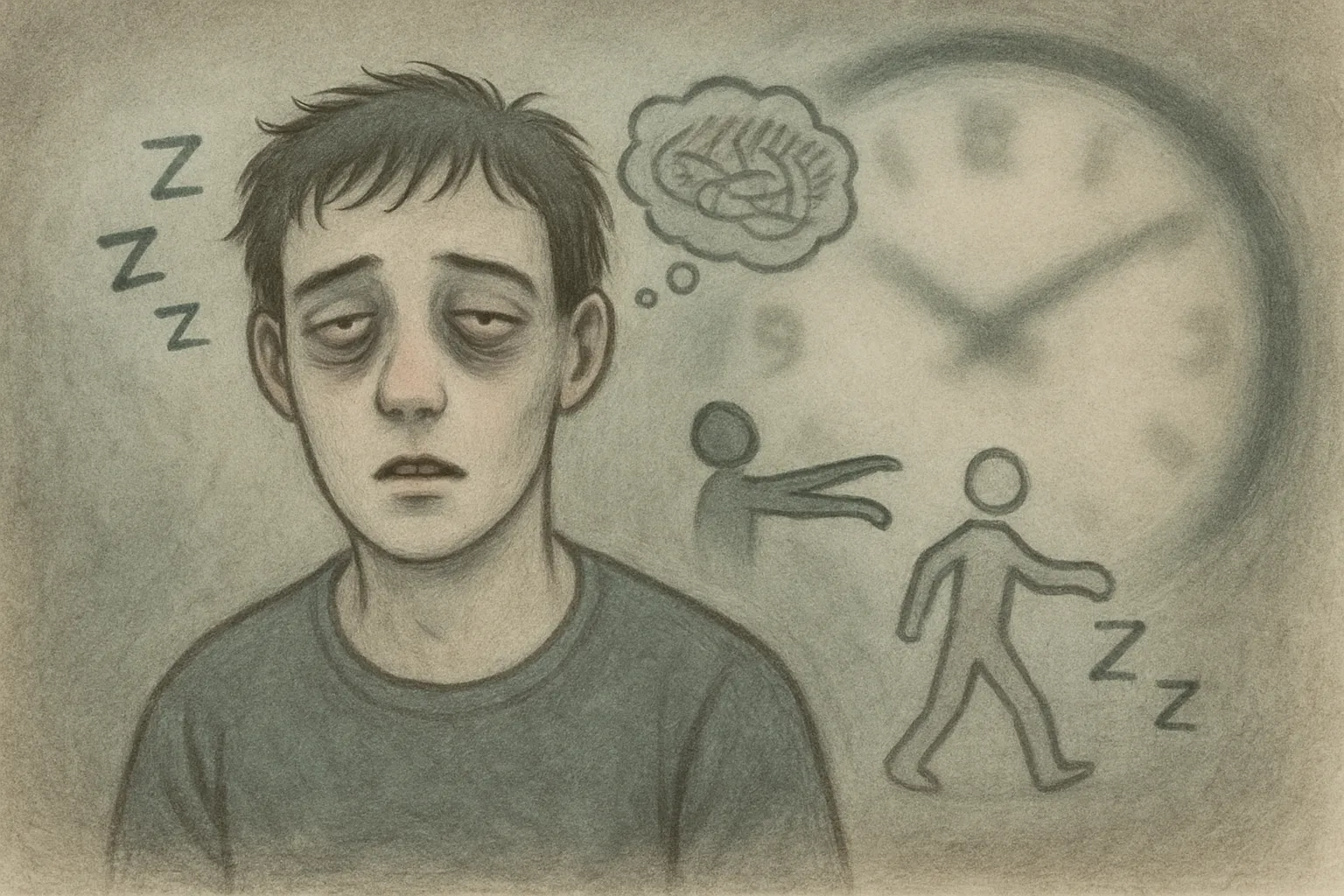 Insomnia medication side effects
Insomnia medication side effects
3. Lifestyle and Home Remedies (Sleep Hygiene)
While not a standalone treatment for chronic insomnia, good sleep hygiene practices are fundamental for promoting healthy sleep and are often integrated into CBT-I.
- Maintain a Consistent Sleep Schedule: Go to bed and wake up at the same time every day, even on weekends.
- Create a Relaxing Bedtime Routine: Engage in calming activities before bed, such as reading, taking a warm bath, or listening to soothing music.
- Optimize Your Sleep Environment: Ensure your bedroom is dark, quiet, cool, and comfortable. Invest in a good mattress and pillows.
- Limit Caffeine and Alcohol: Avoid caffeine and alcohol, especially in the hours leading up to bedtime.
- Avoid Large Meals Before Bed: Finish eating at least 2-3 hours before sleep.
- Regular Physical Activity: Engage in moderate exercise during the day, but avoid vigorous workouts close to bedtime.
- Limit Naps: If you must nap, keep it short (20-30 minutes) and early in the afternoon.
- Manage Stress: Practice stress-reduction techniques like yoga, meditation, or mindfulness.
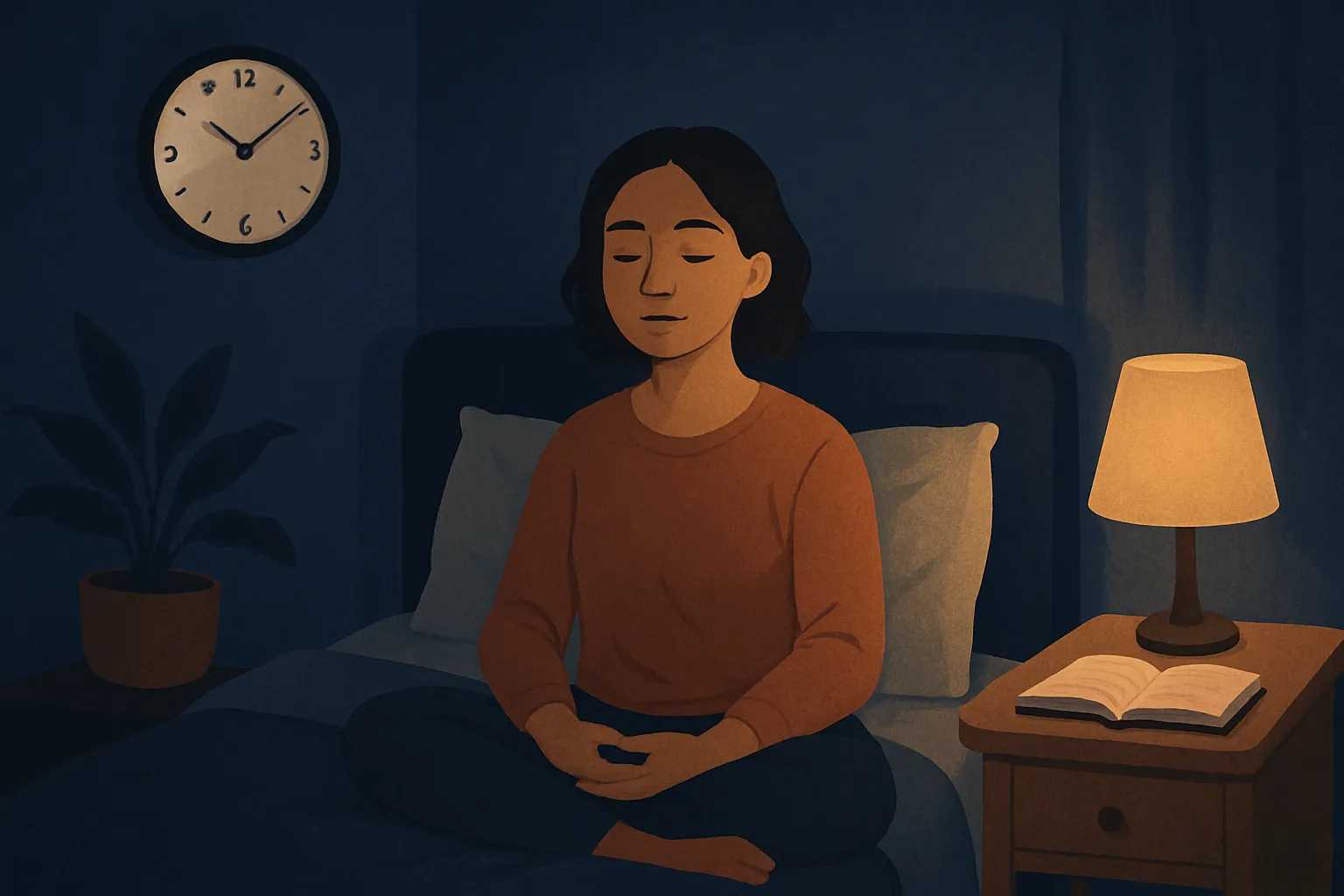 Lifestyle management for insomnia
Lifestyle management for insomnia
Alternative and Complementary Therapies
Natural Sleep Aids
Several natural substances have shown promise in improving sleep quality:
- Melatonin: A hormone that regulates the sleep-wake cycle. Supplemental melatonin can be helpful for jet lag and certain types of insomnia.
- Valerian Root: An herb that has been used for centuries to promote sleep and reduce anxiety.
- Chamomile: Known for its calming properties, chamomile tea can be a soothing bedtime ritual.
- Lavender: The scent of lavender has been shown to improve sleep quality in some studies.
 Natural sleep aids alternatives
Natural sleep aids alternatives
Mind-Body Techniques
- Mindfulness Meditation: Regular practice can reduce stress and improve sleep quality.
- Yoga and Tai Chi: Gentle movement practices that can promote relaxation and better sleep.
- Biofeedback: Learning to control physiological responses like heart rate and muscle tension.
When to Seek Professional Help
While occasional sleep difficulties are normal, you should consult a healthcare provider if:
- Insomnia persists for more than a few weeks
- Sleep problems significantly impact your daily life
- You experience symptoms of other sleep disorders (like sleep apnea)
- You have underlying medical or psychiatric conditions
- You're considering sleep medications
Prevention Strategies
Preventing insomnia involves maintaining good sleep habits and addressing risk factors early:
- Regular Exercise: Physical activity can improve sleep quality, but avoid vigorous exercise close to bedtime.
- Stress Management: Develop healthy coping mechanisms for stress, such as meditation, deep breathing, or talking to a therapist.
- Healthy Diet: Avoid heavy meals, caffeine, and alcohol close to bedtime.
- Consistent Schedule: Maintain regular sleep and wake times, even on weekends.
The Road to Recovery
Recovering from insomnia is often a gradual process that requires patience and persistence. The most effective approach typically involves:
- Professional Assessment: Getting an accurate diagnosis and understanding the underlying causes
- Comprehensive Treatment: Combining multiple strategies tailored to your specific situation
- Lifestyle Changes: Implementing and maintaining healthy sleep habits
- Ongoing Support: Regular follow-up with healthcare providers and possibly support groups
Conclusion
Insomnia is a complex condition that affects millions of people worldwide, but it is treatable. Understanding the underlying causes and implementing evidence-based strategies can lead to significant improvements in sleep quality and overall well-being. Whether through cognitive behavioral therapy, lifestyle modifications, or a combination of approaches, there are effective solutions available for those struggling with insomnia.
Remember that recovery takes time and that seeking professional help is often the most effective path to better sleep. With the right approach and support, you can overcome insomnia and enjoy the restorative sleep your body and mind need.
Key Takeaways
- Insomnia is a common sleep disorder that can significantly impact physical and mental health
- Multiple factors contribute to insomnia, including biological, psychological, and environmental factors
- CBT-I is the gold standard treatment for chronic insomnia
- Lifestyle modifications and good sleep hygiene are essential components of treatment
- Professional help should be sought for persistent sleep problems
- Recovery is possible with the right combination of strategies and support
🚀 Take Action Now: Your Path to Better Sleep
Immediate Steps You Can Take
-
Download Snail Sleep APP - Start monitoring your sleep patterns and identify insomnia triggers
- Track sleep duration, quality, and disturbances
- Monitor environmental factors affecting your sleep
- Get personalized insights based on your sleep data
-
Start a Sleep Diary - Document the symptoms and patterns mentioned in this guide
- Record sleep onset time, wake-up time, and sleep quality
- Note any factors that might be affecting your sleep
- Share this data with your healthcare provider
-
Consult a Professional - If symptoms persist for more than a few weeks
- Seek evaluation from a sleep medicine specialist
- Consider CBT-I therapy for chronic insomnia
- Discuss medication options if appropriate
-
Implement Sleep Hygiene Practices - Begin with the fundamentals
- Establish a consistent sleep schedule
- Create a relaxing bedtime routine
- Optimize your sleep environment
How Snail Sleep APP Can Help
The Snail Sleep APP is specifically designed to address the challenges discussed in this guide:
- Sleep Pattern Analysis: Advanced algorithms identify your unique sleep patterns and potential insomnia triggers
- Sleep Apnea Monitoring: Detect breathing irregularities that might be contributing to sleep problems
- Snoring Analysis: Monitor snoring patterns and their impact on sleep quality
- Smart Alarm: Wake up at optimal times based on your sleep cycles
- Sleep Quality Scoring: Get objective measurements of your sleep improvement progress
- Dream Talk Recording: Capture sleep-related thoughts and experiences for better understanding
Success Stories
"Using Snail Sleep APP helped me identify that my insomnia was triggered by late-night screen time and irregular sleep schedules. The app's insights guided me to establish better sleep hygiene, and within 3 weeks, my sleep quality improved significantly." - Sarah M., Verified User
"After struggling with insomnia for months, the sleep pattern analysis from Snail Sleep APP revealed that my sleep was being disrupted by undiagnosed sleep apnea. This discovery led to proper treatment and complete resolution of my sleep problems." - Michael R., Verified User
References
- American Academy of Sleep Medicine. (2014). International Classification of Sleep Disorders, 3rd Edition.
- Morin, C. M., & Benca, R. (2012). Chronic insomnia. The Lancet, 379(9821), 1129-1141.
- Riemann, D., et al. (2017). European guideline for the diagnosis and treatment of insomnia. Journal of Sleep Research, 26(6), 675-700.
- Qaseem, A., et al. (2016). Management of chronic insomnia disorder in adults: a clinical practice guideline from the American College of Physicians. Annals of Internal Medicine, 165(2), 125-133.
- National Sleep Foundation. (2020). Sleep in America Poll: Sleep and Mental Health.
Related Articles
- Insomnia and Anxiety: How Worry Steals Your Sleep
- Understanding Your Sleep Patterns with Self-Test Questionnaires
- Insomnia and Snoring: Can Poor Sleep Quality Worsen Airway Obstruction?

